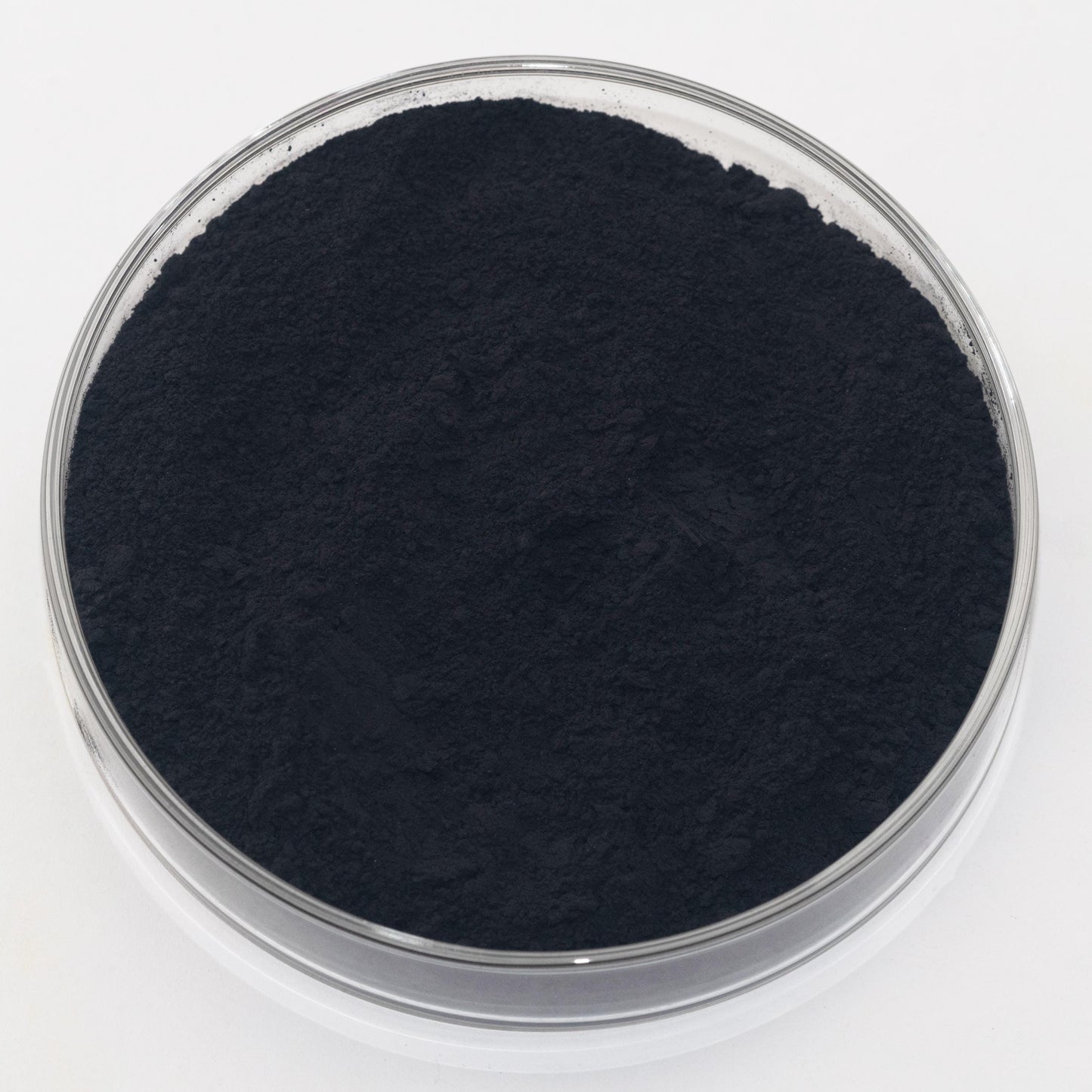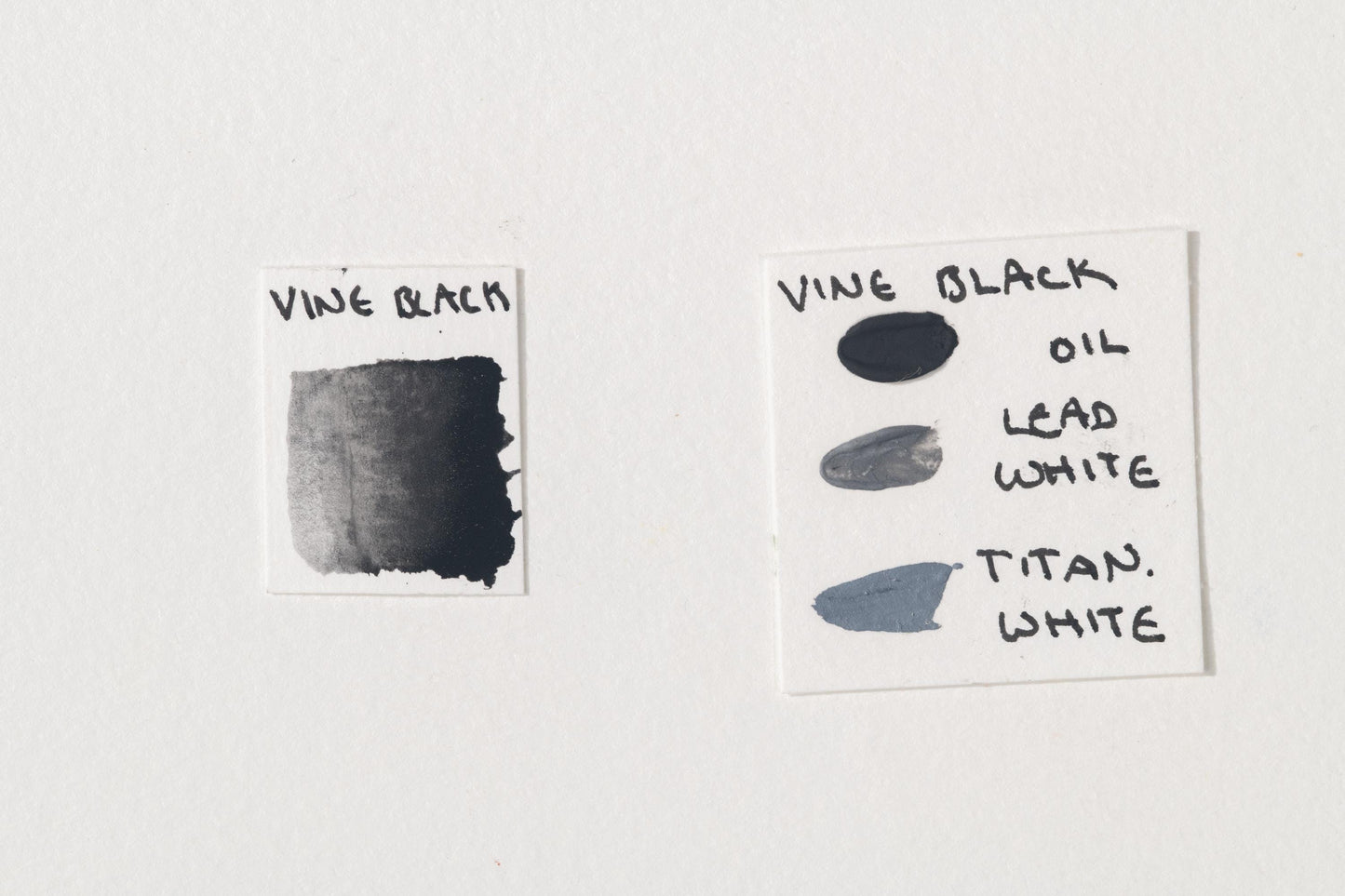Vine Black
Vine Black
Couldn't load pickup availability
Share



Description
Vine Black is a handmade natural single-pigment black, traditionally produced by charring grapevine shoots or other woody plant material in a low-oxygen environment. This process creates a soft, deep black pigment primarily composed of carbon, with subtle warm undertones and a slightly bluish tint in mixtures. Vine Black is known for its fine particle size, excellent dispersion, and ease of blending, making it a favored choice for artists across different mediums.
Vine Black produces a soft, velvety black with slightly cooler undertones than Bone Black. It has moderate tinting strength, allowing for subtle gradations and shading without overpowering mixtures. Unlike synthetic blacks, Vine Black offers a more natural, organic feel, making it ideal for traditional techniques, glazing, and washes. It is highly stable, has excellent lightfastness, and disperses smoothly in oil, watercolor, and tempera.
History
Vine Black has been used as a pigment since antiquity, with origins tracing back to the classical civilizations of Greece and Rome. Ancient artisans used charred grapevine twigs to create black inks, frescoes, and wall paintings. It was a common pigment in medieval manuscripts and was widely used in fresco painting during the Renaissance. Artists favored Vine Black for its delicate texture and ability to produce soft, atmospheric effects in drawings and paintings.
During the 17th and 18th centuries, Vine Black became a staple for painters seeking deep, natural blacks with smooth blending capabilities. It was often used in underpainting and glazing techniques due to its transparency and ability to create rich tonal variations. In the 19th century, it remained a preferred black for academic studies, as it provided a range of grays without the harshness of modern synthetic blacks. In the artwork pictured 'The Disrobing of Christ' by El Greco, vine black is used throughout to create the deep shadows present in the artwork and for the harrowing feeling behind Christ.
Today, Vine Black is still prized by fine artists, conservators, and historical painters for its organic origin and natural blending properties. Though largely replaced by industrial carbon blacks in mass production, it remains a sought-after pigment for those who value traditional materials and the timeless character of natural blacks.
Health and Safety
Precautions:
Keep out of reach of children and pets.
Do not consume.
Not for cosmetic or food usage.
Do not spray apply.
For further health information, contact a poison control center.
Use care when handling dry pigments and avoid dust formation.
Use particular caution with fibrous, fine, or toxic pigments.
Do not eat, drink, or smoke near dry pigments. Avoid breathing in pigment dust and use a NIOSH-certified dust respirator with a sufficient rating for dry pigment.
Wash hands immediately after use or handling.
If dust is likely, always wear protective clothing to keep out of eyes, lungs, and off skin, and keep the area ventilated.
This product may contain chemicals known by the State of California to cause cancer, birth defects, or reproductive harm.
Warnings and bottle information are abbreviated.
Pigment Information
Pigment Type: Natural, carbon-based pigment from charred grapevine twigs (Carbon)
Suitable Mediums: Watercolor, Oil, Tempera, Acrylic, Ink
Lightfastness: Best (Highly stable and resistant to fading)
Opacity: Semi-opaque
Other Names: Vine Charcoal Black, Carbon Black
Color Index Code: PBk8
Image: 'The Disrobing of Christ' by El Greco from the Alte Pinakothek Munich



